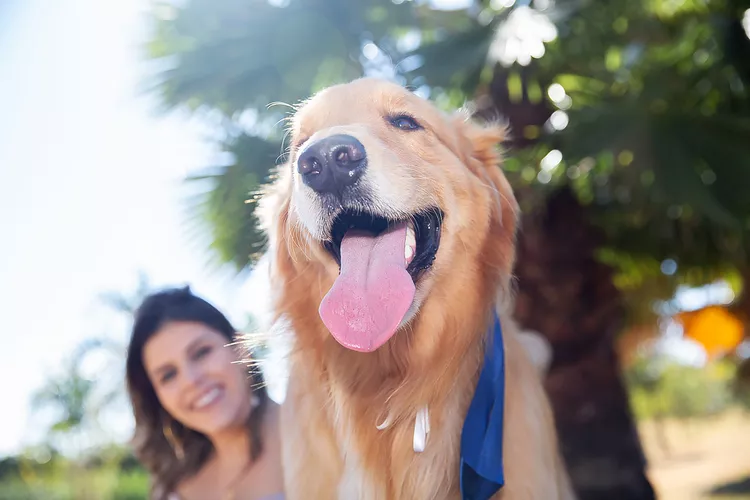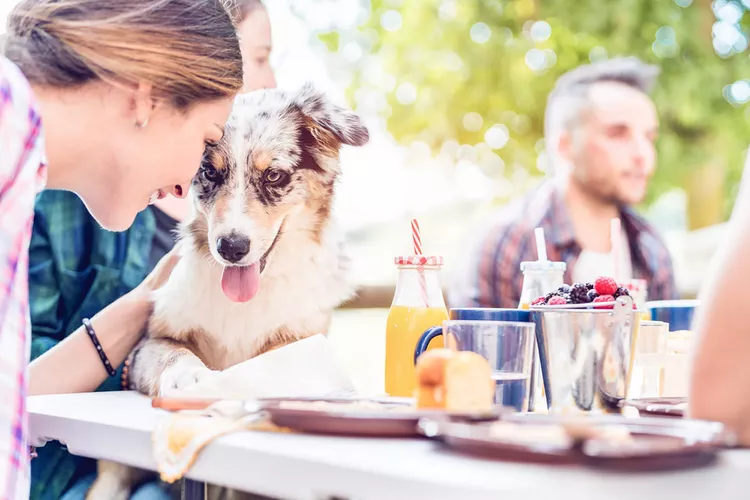Do Dogs Shed More in Summer? A Grooming Expert Reveals What to Expect
Depending on your pup’s coat, the busy floof season might not be when you think it is.
As temperatures rise, our canine pals sometimes need a little extra care. More water. Maybe shorter, strategically timed walks to avoid the heat. Tasty popsicles as treats. But do dogs shed more in the summer to cool off, too? Not exactly—although all the fur on your couch might seem to tell a different story.
Paige McIlwain is the director of education and training at Salty Dawg Pet Salon. She says dogs have two coat categories: single and double. Within those categories are many coat types with different characteristics, including:
– Long
– Short
– Combination of long and short
– Smooth
– Curly or wooly
– Wire
– Hairless (it’s peach fuzz, mostly)
Your dog’s coat determines whether there’s a shedding season, known as “blowing coat,” or more of a general sloughing of fur throughout the year.
When Do Dogs Shed the Most?
It all depends on what coat your pup is wearing. Single-coated dogs, such as Boston terriers, boxers, pit bulls, and short-haired Chihuahuas, only have one layer of fur. This means they shed less overall, but what they do shed stays pretty consistent.
“Single-coated dogs usually have a steadier rate of shedding throughout the year,” McIlwain says. “Double-coated dogs primarily shed heavier as the seasons change, with lighter shedding throughout the year.”
Double-coated dogs, including Australian shepherds, golden retrievers, Pomeranians, and Siberian huskies, have two layers: a top coat and a more dense undercoat. “Double-coated dogs tend to shed the most according to the different seasons, with the most noticeable amounts during the spring and fall,” McIlwain says.
This means these breeds shed their undercoat before summer, releasing the thick insulation so they can feel cooler. And that’s when the fur tornado swirls into action! Some blow coat again in the fall to prepare for new under-layer growth that helps them stay toasty warm in cold weather.
So while it might seem that your dog is shedding so much in the summer, it’s probably the normal amount for their coat. That is, unless there’s another issue.
Typical vs. Atypical Dog Shedding
If you’ve noticed your dog shedding a lot in summer, there might be an underlying problem. McIlwain says normal shedding means that some hair comes off your dog when you pet her, and you’ll notice some fluff around the house. Overall, this is easily controlled with regular brushing and combing (plus a powerful vacuum).
Atypical shedding happens for a few different reasons. If you’re used to your pupper blowing coat but this time is different than before—heavier, with the fur coming out in tufts and almost matted like it hasn’t been brushed out—McIlwain says the fur is “compacted” or “impacted.” She recommends taking your pet to a grooming salon for a de-shed service.
Other reasons for atypical shedding might require a veterinary exam. “In this case, an owner would notice significant thinning or balding of the pet’s coat,” she says. This type of shedding might be due to:
– Stress
– Allergies
– Dietary changes
– Mange
– Hypothyroidism
– Cushing’s disease
– Hot spots as a result of skin irritation or infection
It’s also possible that if you have a sweet senior dog, additional shedding might be the result of advancing age.
How to Reduce Dog Shedding in Summer
“Dog hair has a life cycle just like human hair, and [it] falls or sheds at the end of said cycle while being replaced by new growth. It’s generally recommended to have a de-shed service every 4–8 weeks to maintain a healthy coat, with home maintenance in between,” McIlwain says. “I like to always remind pet parents that de-shed services don’t completely stop shedding. They aid in reducing it over time with repeated use.”
She also advises top-notch grooming equipment, especially if you have a heavy-shedding pet. “Invest in a home-use, high-velocity dryer and a good undercoat rake. Using the rake at least twice a week and the dryer at least bi-weekly can aid greatly in keeping control of your pet’s shedding,” she says. “Once the coat is beginning to look impacted, the help of a professional pet stylist is important to ensure your pet’s skin and coat remains healthy.”
And although it might seem like shaving your dog would help control shedding too, please don’t do this. Total shaving is only done by professional groomers in certain circumstances based on breed standards or health conditions, but most dog coats don’t need it to control shedding in the summer—especially double-coated breeds. Their outer coat has essential guard hairs that protect their skin from sun damage, and also provide better air circulation to help keep them cool.












Post Comment